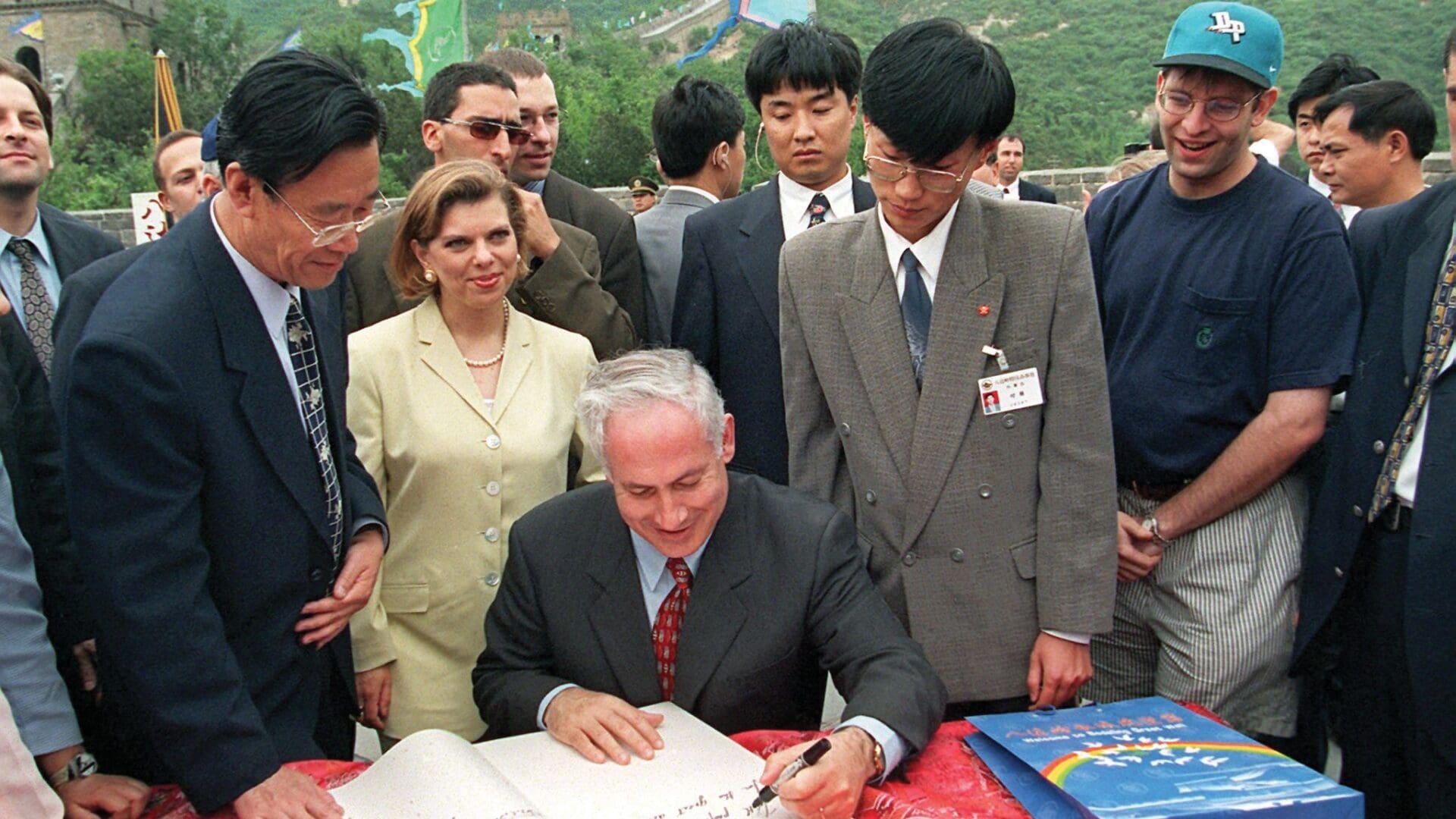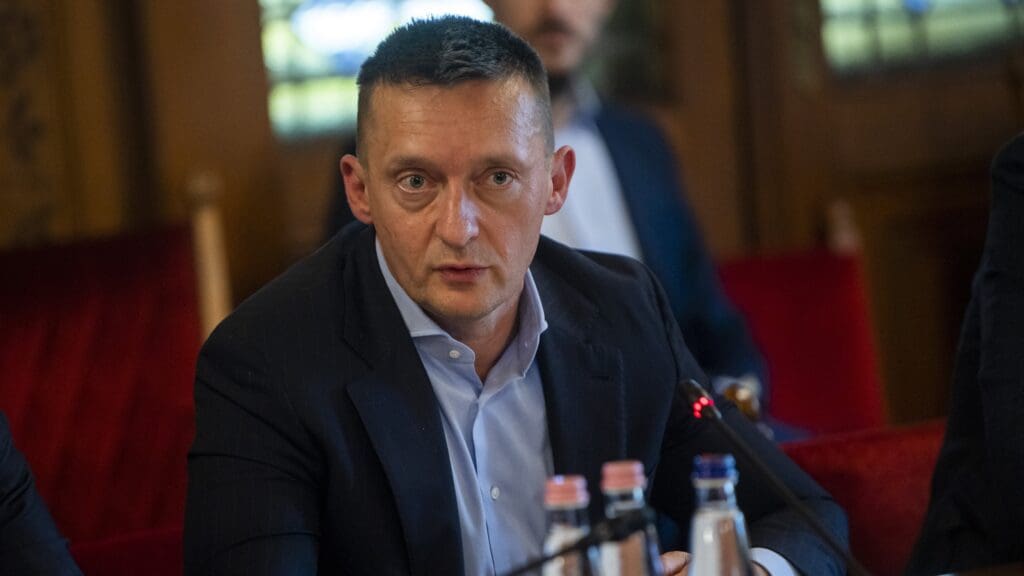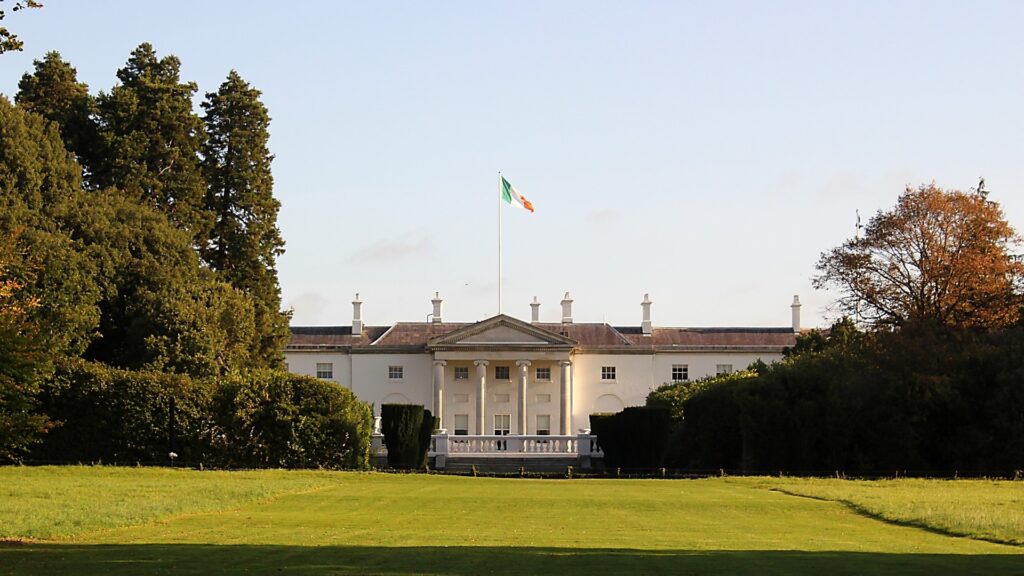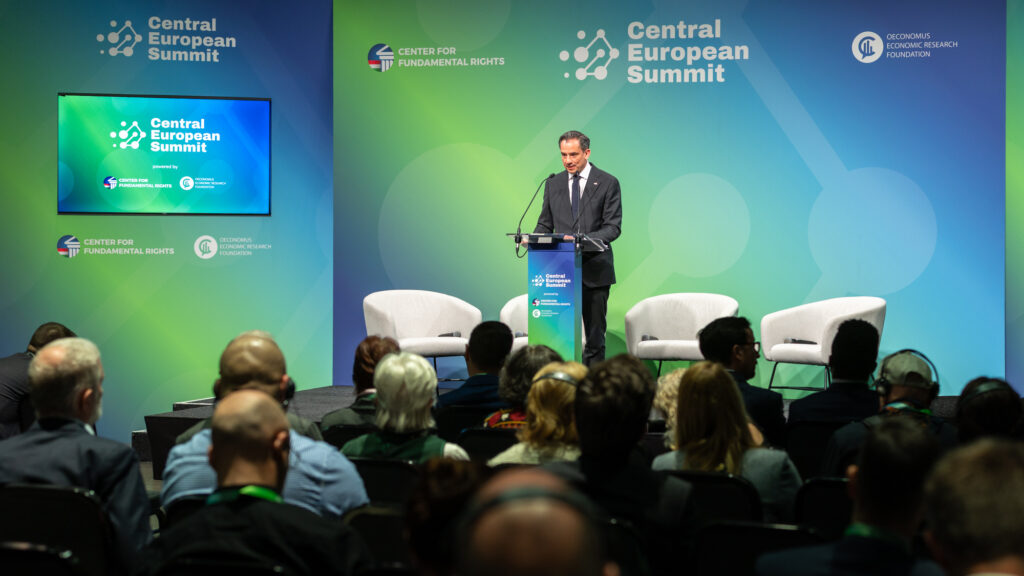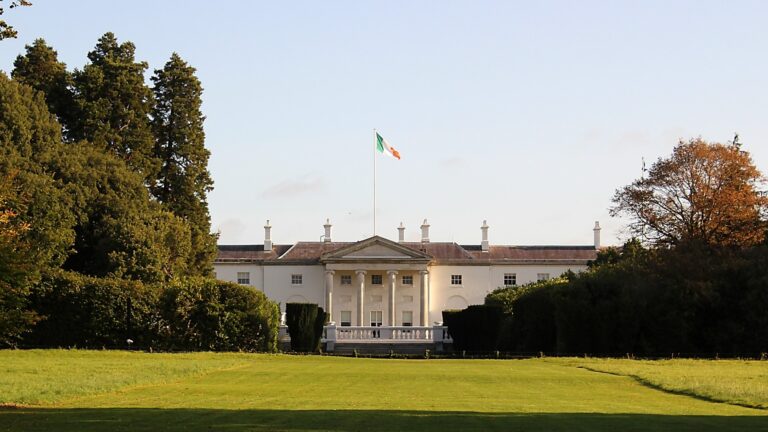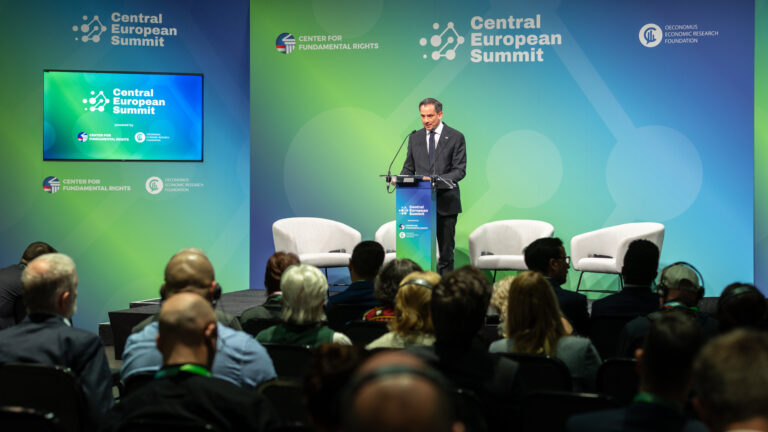This article was published in Vol. 4 No. 1 of our print edition.
A man once observed that you cannot direct the wind, but you can adjust your sails. The art of statecraft is like sailing: a constant struggle to adjust a state’s direction in response to the ever-shifting winds of domestic politics, international affairs, and geopolitical trends. Just as a skilled sailor reads the wind and water to navigate, statesmen must discern the nuances of political climates to guide their nation effectively. In both realms, success hinges not on controlling the uncontrollable, but on agile adaptation and strategic foresight.
This understanding is rather timely, given that in that ever-changing sea that is global geopolitics, we are witnessing a marked departure from the unipolar world that dominated the post-Cold War era. The rise of new power centres, particularly in the Eurasian continent, heralds the advent of a multipolar environment. This transition is not merely a shift in power, but also a transformation in the way nations perceive and interact with each other. The growing influence of countries like China and India, along with the resurgence of Russia and the rise of middle-power states, means that power is not concentrated but diffused, leading to a complex web of alliances, networks, partnerships, and rivalries. This diffusion demands a more nuanced understanding of global affairs, where traditional alliances may not always align with national interests and new partnerships may emerge in unexpected quarters.
For some countries, however, a challenging multipolar environment also presents new opportunities. Though these countries have the potential to leverage their strategic importance in the global arena, they also face the risk of becoming pawns in the power plays of larger states. As a result, these countries must thus engage in a careful balancing act, weighing their immediate interests against long-term geopolitical goals.
In a recent paper, I developed a framework for analyzing and recognizing these types of countries, and identified five of them: Hungary, Azerbaijan, Israel, Kazakhstan, and the United Arab Emirates (UAE).1 This grouping of countries, which I have dubbed the HAIKU states, and the framework I put forward, present a novel approach to exploring and understanding how statesmen and national leaders can navigate a dynamically changing global political landscape, marked by shifts in power balances, evolving alliances, and heightened strategic competition. But as we shall see, recognizing these sorts of countries is only the start. What comes next is discerning how they can maximize their positions and not only ensure their geopolitical survival, but also achieve newfound prosperity.
The HAIKU States as a Framework
At first glance, the HAIKU states appear disparate: they have distinct differences in geography, government, religion, and culture. However, a closer analysis reveals that these five countries share three common geopolitical characteristics. First, they are rising middle powers. Second, they possess integrative power. Third, they consistently pursue a multivectoral foreign policy. A brief discussion of each of these characteristics is warranted.
First, to understand what constitutes a rising middle power, it is vital to understand middle powers themselves. While there is no authoritative and definitive definition of the term, it generally refers to states with significant regional presence and geographical rootedness, considerable economic and military capacity, historical and cultural pedigree as civilizational states, and regionally focused ambitions.2 Middle powers are not seeking global influence but rather aim to maintain influence in their immediate geographical areas. They are, in short, one step below great powers.
Unfortunately, these substantial prerequisites limit middle powers to a mere handful, such as India, Japan, Türkiye, Iran, Brazil, and so forth. As I note in my HAIKU paper, ‘Smaller and less powerful countries that nonetheless still play important, even critical, roles in the international arena—whether it be in security, diplomacy, or development cooperation—would not be counted as middle powers’.3 Given this, I put forward a definition for rising middle powers: ‘regionally-focused, geographically-rooted states with limited yet considerable assets (diplomatic, military, and/or economic) that can pursue their own national interests and, sometimes, play a determinant role in broader geopolitics by leveraging their position and relative importance to regional and great powers.’4
Second, the concept of integrative power, as defined by Nikolas K. Gvosdev, refers to a state’s ‘ability to generate positive relationships’ from various sources. These include ‘the existence of important transit and communications lines that are vital for trade traversing its territory; the position of the state to promote regional integration and collective security among its neighbours; its role as a point of passage between different blocs, or its position overlapping the spheres of influence of several different major actors, thus serving as a mediator between them; or its willingness to take up the role as a guaranteed barrier securing neighbours from attack.’5
Third, the adoption of a multivectoral foreign policy is of paramount importance for many states in a multipolar environment. The term’s originator and primary exponent, former Kazakh president Nursultan Nazarbayev, describes it as ‘the development of friendly and predictable relations with all states that play a significant role in world affairs and are of practical interest to the country’.6 This, and other provided definitions, fail to capture the exact breadth of action and motivations that underlie a multivectoral foreign policy. Given this, I elaborated in the original HAIKU paper that multivectoralism has four notable elements:
- Pragmatism over ideology: Countries with a multivectoral foreign policy prioritize practicality over ideological rigidity.
- Sovereignty and security: Countries with a multivectoral foreign policy aim to ensure their national sovereignty, especially in geostrategically challenging neighbourhoods.
- Leveraging between great powers: Positioned between major powers, countries with a multivectoral foreign policy often play a balancing act, leveraging relationships to ensure their unique national interests are protected.
- Economic development and cooperation: Countries with a multivectoral foreign policy seek new opportunities to diversify their economies, often looking for partners outside their traditional alliances.7
The Israel Question
At this point it is essential to pause in discussing the HAIKU states framework to recognize the proverbial elephant in the room: Israel’s inclusion in the grouping, particularly in light of recent events (i.e., the ongoing Israel–Hamas War, also known as the Simchat Torah War).8 This is particularly important, as the country’s circumstances serve to highlight the sorts of challenges that the HAIKU states face amid the world’s transition to a multipolar environment.
In terms of being a rising middle power and possessing integrative power, Israel fits the bill. It possesses strong military capabilities and a powerful economy relative to its size and population, with a particularly thriving technology industry. Its agricultural and water management processes and technologies are the envy of the region.9 The country’s position—strategically located at the crossroads of the West, the Middle East, and Africa—has traditionally served as a pivotal junction for interactions among these regions and their various empires and powers throughout history. With the announcement late last year of the India–Middle East–Europe Economic Corridor (IMEC)—along with other government-supported initiatives to become a regional logistics and energy hub via ports, rail lines, and pipelines—the country’s integrative power potential remains.10 It ought to be noted that a number of these material elements—the country’s geographical position, its existing infrastructure and industrial base, and so on—are relatively solidified and would remain even if there were dramatic political changes.
It is Israel’s foreign policy approach that raises doubts. It is a particularly strong ally of the United States and the West in general, and is often regarded as a ‘Western beachhead’ in the Near East.11 The Jewish state’s contentious and sometimes violent history with its primarily Muslim neighbours, particularly owing to the Palestinian situation, does not readily strike observers as a country pursuing a multivectoral foreign policy. If anything, it is Israel’s precarious situation that makes it so dependent on US support. The current conflict only highlights this dynamic: Jerusalem is relying heavily on Washington’s political, military, and diplomatic support to fend off international criticism over its punitive strategy against Hamas and the Gaza Strip.
‘The art of statecraft is like sailing: a constant struggle to adjust a state’s direction in response to the ever-shifting winds of domestic politics, international affairs, and geopolitical trends’
Yet a deeper examination reveals that this dynamic has been and is changing. In recent years, the country has increasingly and quietly cultivated a more independent direction, away from alignment with Washington. Consider, for example, how Israel has improved its ties with China and India, especially regarding trade and economic investment. This has yielded substantial results. As per a recent report from the National University of Singapore: ‘China’s bilateral trade with Israel grew from US$50 million in 1992 to US$15 billion in 2020, making it Israel’s largest trading partner in Asia and its third largest trading partner in the world after the European Union and the United States. From 2011 to 2021, the share of Israeli exports to Asia going to China rose from 25% to 42%. India’s trade with Israel too has grown, rising from US$200 million in annual trade in 1992 to US$7 billion in 2022, and these figures do not include India’s important but more secretive defence purchases from Israel.’12
This diplomatic shift away from the West was driven, interestingly, by economic factors. Israeli policymakers recognized in the early 2000s that the country’s consumption-focused economic growth model meant a heavy dependence on foreign (especially Western) economies. As such, since the early 2000s, the Israeli government has made a concerted effort to shift towards an export-led growth model. Israeli economist Arie Krampf captured the shift in a white paper released last year: ‘[In 2003, for then Finance Minister Benjamin] Netanyahu, private sector growth was a means to improve Israel’s economic power in a globalized world. [P]rivatization and liberalization were processes designed to improve Israel’s capacity to withstand external political pressure and pursue an independent foreign policy…By late 2003, Israel’scurrentaccounthadbecomepositiveand was growing, indicating that foreign currency was pouring into the economy. This change, which went unnoticed by the Israeli public, was nothing less than a transformative moment, a revolution in Israel’s economic history…Ben-Gurion’s doctrine assumed dependency on foreign capital. This dependency…was a key element in the national vision and identity: the dependence of the state-building project on foreign assistance. By becoming a “surplus country”…Israel had become less vulnerable than it had been before.’13
Thus, as economist Adam Tooze summarized, ‘Netanyahu’s strategy was to make the modern segment of Israel’s economy so competitive that it would enable not just independence from American (or European) pressure, but turn Israel into a magnet for regional economic interests, above all of the Gulf’.14 The country’s economic transformation led to a gradual shift toward something resembling a multivectoral foreign policy, notable in Jerusalem’s increased diplomatic engagement with its regional neighbours and beyond.
The Abraham Accords, signed on 15 September 2020, were arguably the pinnacle of this strategy, laying the foundations for Israel’s integration into the Middle East’s broader economic system and further alignment with the Arab Gulf states. One can see this in the work of Israel Katz, the country’s foreign minister (formerly minister for energy): he spent years advocating for the construction of railways, all to eventually turn Israel into a regional transport hub and ‘an Asian–European cargo link as an alternative to the Suez Canal’.15 Asian states took notice of these developments and invested accordingly. China, for example, has poured close to USD 13 billion into Israeli infrastructure projects, from the Carmel Tunnels to the Northern Haifa Bayport Terminal.16
If anything, one could argue that it was the success of Israel’s multivectoral efforts that helped motivate Hamas’s assault on 7 October 2023. The attack can be interpreted as an attempt to throw off course Jerusalem’s strategy of normalizing diplomatic relations with its neighbours (particularly Saudi Arabia) and cultivating ties with China, Russia, and India.
At present, one might assume that Israel’s brief flirtation with a multivectoral foreign policy is dead; Jerusalem is relying heavily on US and Western backing to provide diplomatic support for its punitive campaign against Hamas and various aligned groups, the so-called ‘Axis of Resistance’. However, current trends are not in Israel’s favour and demonstrate that the current state of affairs is unsustainable. The conflict has revealed that Western, including American, support for Israel is not what it once was. It is increasingly clear that there exists a generational gap in support for the Jewish state, with younger generations demonstrating far greater pro-Palestinian views.17 More distressingly for Jerusalem, this shift in support has manifested within the US foreign policymaking sphere: from the White House to the State Department, from USAID to think tanks, young staffers have voiced anger and dissatisfaction over their superiors’ support of Israel.18 For Israelis, the writing is on the wall: many of these pro-Palestinian staffers will rise to positions of power in coming years, ultimately opening the door for a significant reorientation of US foreign policy towards Israel.
Compounding the situation is the relative decline of America’s military power. A recent 644-page report finds that the ‘current U.S. military force is at significant risk of being unable to meet the demands of a single major regional conflict while also attending to various presence and engagement activities’.19 This, combined with a diminished industrial base and competing demands (competition with China and Russia, for instance), means that Israel cannot take continued US support for granted.20 As recently as late January, this is evident by the Biden administration’s decreasing support for Israel’s Gaza campaign.21
In short, despite the furious punitive campaign prompted by Hamas’s vicious 7 October attack, changing geopolitical circumstances are forcing, and will continue to force, Israel towards a multivectoral foreign policy. In the medium term, this change will also curb Jerusalem’s freedom of action, which enabled (among other things) its decades-long occupation of the West Bank and siege of Gaza. Ultimately, the forced pursuit of a multivectoral foreign policy will likely result in both Israel’s integration with the region’s economy and the creation of a Palestinian state, all as a means to ensure continued national survival in a more demanding international environment.
The End of the Old Order Heralds the Beginning of the New
Israel’s situation, though fairly complicated, serves as a particularly illustrative example of the challenges faced by the HAIKU states. The relative decline of the United States, combined with a variety of other factors, is fragmenting the US-led unipolar system and opening the way for a polycentric, multipolar system. This, in turn, is triggering a rearrangement in various regional orders, thereby prompting many nations—particularly those in strategically important positions—to recalibrate their foreign policies toward either alignment with local regional great and middle powers or, if possible, multivectoralism.
Those states that can afford to shift toward multivectoralism are driven by a pragmatic understanding that overly aligning with one major power could expose them to geopolitical risks and limit their flexibility in a rapidly changing world. Thus, by maintaining a neutral stance, countries aim to safeguard their national interests, promote stability, and navigate the intricacies of new global power dynamics without being entangled in the rivalries of major powers.
Consider, for instance, the specific contexts in which the other four HAIKU states inhabit. The UAE not only sits between regional heavyweights Iran and Saudi Arabia, but also occupies a central location along key international trade routes and must now contend with the United States’ gradual pullback from the Persian Gulf. Kazakhstan must balance relations with its great power neighbours, Russia and China, while also engaging with the West and various middle powers with interests in Central Asia. Azerbaijan, located between Russia, Iran, the West, and Central Asia, is at the crossroads of various powers and a variety of trade, transport, and energy corridors. Finally, Hungary, though nestled in East Central Europe, is also located ‘between the overlapping spheres of influence of the West, Russia, and Türkiye, making it a…transit point between all three’.22 Despite being a member of both the European Union and NATO, the country’s leadership recognizes the parameters of the ongoing geopolitical transition and the prospect of impending broader Western economic malaise, inflation, and deindustrialization.23 Thus, in seeking to prioritize its own national interest first, Budapest maintains stable relations with as many relevant state actors as possible, even though doing such currently makes it the ‘black sheep’ of the West.
Presently, the shift toward multivectoralism is most pronounced along Europe’s eastern flank, in the Middle East, and in Central Asia. This is not unexpected, given that these regions are historically subject to intense geopolitical competition and influence from larger powers. It is not surprising then that, given the end of the US unipolar moment and its relatively pacifying effect on international affairs, the countries of these regions are the first to feel the renewed pressures of great-power competition.
Looking ahead, however, this dynamic will also become evident in other regions, particularly in Latin America and Africa. These regions, with their rich natural resources and geopolitical real estate of variable strategic importance, are likely to become arenas where the influence of traditional and emerging powers intersect. As a result, a handful of nations in these areas will showcase characteristics that could merit their inclusion among the HAIKU states. Potential countries of interest at this stage include Morocco, Angola, and Uruguay.
What Comes Next for HAIKU States?
The path ahead for the HAIKU states will probably involve a continued balancing act between maintaining their national interests and adapting to the changing global order. This, in turn, will potentially lead to innovative diplomatic strategies and previously unconsidered geopolitical alignments. Indeed, the various approaches of the HAIKU states in the coming years will likely not only serve as a barometer for the effectiveness of rising middle powers in the modern geopolitical arena, but also provide an opportunity to conceptualize polycentric and regionalist alternatives to the current international order.
At present, two potential paths come to mind. In the first one, the HAIKU states could organize themselves into what is known as a minilateral format. Minilaterals typically involve small groups of countries—often three to nine—with shared interests that work together to tackle specific issues that larger and more formal multilateral organizations struggle with. These minilateral groups are different from larger multilateral entities in that they are more focused on specific tasks, selective in membership, and generally better at reaching agreements. Their less formal approach also allows them to be more flexible and responsive.
In the emerging multipolar environment, minilateral formats have become increasingly popular for a variety of reasons. As foreign policy analyst Raja Mohan notes, ‘minilaterals are networks, not blocs, making it possible to rethink regional geographies’.24 Members of minilateral formats do not necessarily have to inhabit the same immediate geographical region, thus allowing for the creation of transregional groupings that demonstrate a purpose when viewed more broadly. For example, the I2U2 Group—composed of India, Israel, the United Arab Emirates, and the United States—forms the basis of an ‘Indo-Abrahamic alliance’ which, as argued by scholar Mohammed Soliman, could be utilized to create a favourable balance of power in the Middle East, stabilizing the region.25
Additionally, the minilateral format is attractive to states with a history of staying out of formal alliances or nonalignment more generally. Minilaterals allow countries to tap into the existing networks, alliances, and spheres of influence of great powers without necessarily fully aligning themselves with them. This, in turn, allows minilateral participants to maintain strategic sovereignty while working with others to advance their interests, particularly those relating to security.
For the HAIKU states, a minilateral format would be useful. All five countries wish to navigate a multipolar environment and retain strategic neutrality while leveraging the opportunities presented by renewed great-power competition. As I note in the original HAIKU paper, ‘leaders and policymakers within the HAIKU nations are independently and increasingly recognizing the potential benefits of pursuing mutual diplomatic and economic collaboration and development’.26 In fact, there already exists a strong level of collaboration and mutual investment between the five countries. A forum where they could discuss ongoing geopolitical affairs, coordinate multilateral policies, and explore investment opportunities would thus be useful.
The second path HAIKU states could pursue is admittedly more novel; these countries could revive the centuries-old idea of a trade league. The concept stems from the Hanseatic League—a medieval and early modern commercial and defensive confederation of merchant guilds and market towns in North-western and Central Europe. Founded in the late twelfth century, it began with a group of North German towns and communities cooperating to protect their mutual trading interests. The League dominated commercial activity in northern Europe from the thirteenth to the fifteenth century, with major cities like Lübeck, Hamburg, and Bremen becoming central hubs. It established a network of trade routes and gained significant economic power, often negotiating with foreign rulers for trade privileges and military protection. The Hanseatic cities operated their own legal systems and maintained their own armies for mutual defence. Ultimately though, the rise of nation states and changing economic patterns led to the League’s decline and eventual dissolution in the seventeenth century.
‘The path ahead for the HAIKU states will probably involve a continued balancing act between maintaining their national interests and adapting to the changing global order’
At present, there exists no exact definition for the concept of a trade league in political science or international relations—at least as far as this author has found. As a result, I have taken up the task of creating one myself. It is as follows:
A trade league refers to a cooperative alignment of nations, cities, or economic entities, formed to promote mutual trade interests, economic collaboration, and infrastructure development in international markets. Such leagues are characterized by their shared objectives of enhancing trade efficiency, reducing barriers to commerce, and ensuring the security of their respective economic regions. They may also engage in setting common standards, negotiating trade agreements, and coordinating policies to protect against external economic pressures. Unlike a formal political union, a trade league primarily focuses on economic and commercial objectives, often retaining flexibility in membership and less stringent legal obligations. This concept embodies the principles of globalization and regional integration, reflecting a collaborative approach to navigating the complexities of modern international trade relations.
Although a critic might initially balk at the notion that a medieval-era concept can be applied in a twenty-first-century environment of nation states, a closer look at the present circumstances demonstrates that such is indeed the case. To start with, despite the coming era of multipolarity, the return of great-power competition, and the dividing of the world map into spheres of influence, globalization has left its mark. Most states wish to maintain relationships and trade ties with as many key players as possible. This, in turn, creates political and economic conditions favourable for new arrangements created to ensure continued market access and trade engagement.
Next, as political scientist Michael Lind has observed, the concept of the nation state ‘is baggy and loose to the point of being meaningless. The same word is used to describe India, China, and the United States, the three most populous countries in the world; small countries like Sweden, with its 10 million souls, 3 million fewer than the population of the Los Angeles metropolitan area; and tiny but formally independent countries like Tuvalu, with its 11,000 inhabitants.’27 Add to this the effects of industrial-technological development—which de facto results in the geographical concentration of economic activity owing to significant capital and manpower requirements—and the world economy looks more like a collection of city-states (with plenty of surrounding land) than people realize.
Finally, the world is witnessing the creation of new economic corridors and trade routes in response to shifting geopolitics. The Middle Corridor, for example, is taking shape in response to the rising geopolitical competition in Central Asia and conflict between Russia and the West (which has closed off the hitherto preferred Northern Corridor). Further south, the India–Middle East–Europe Economic Corridor (IMEC) was proposed in part to economically align and connect India, Middle Eastern states, and Europe against China and Russia. Other corridors are likely to take shape in the coming years. Relatedly, the United States’ relative decline means that the US Navy may no longer be able to guarantee the protection of the world’s trade routes. The ongoing Red Sea crisis and the relative failure to date of Operation Prosperity Guardian to prevent further disruptions demonstrate that regional actors will be called upon to take a more active role in ensuring the security of their immediate neighbourhoods.28
There do exist a few barriers to the implementation of the trade league concept. Foremost among these is the question of whether certain countries possess the requisite trade sovereignty given extant institutions. The European Union, for instance, is actually responsible for the trade policy of the member countries and negotiates agreements for them. On the one hand, this has its advantages; the EU carries more weight in international trade negotiations than any individual member state would. On the other hand, an individual EU member state—such as Hungary—cannot negotiate new trade arrangements by itself; it must thus take into consideration the views of its fellow member states and work with EU trade officials. Likewise, as a member of the Eurasian Economic Union (EAEU), Kazakhstan must work within the context of EAEU trade agreements and regulations.
Yet given the unfolding transition toward multipolarity—including the increasing fragility of current economic and security agreements, along with nations’ budding desire for a more multivectoral approach to foreign policy—it is increasingly probable that existing trade arrangements will also experience a dramatic change. Blocs may come to recognize that having individual members act as an ‘interface’ with new groupings provides a degree of advantageous flexibility while retaining existing structures and institutions.
Taken together, current conditions favour the creation of trade leagues as a means of aligning the economic and security interests of countries and cities along newly developing economic corridors. It would thus behove the HAIKU states, which are located along the two aforementioned corridors, to take the lead role in conceptualizing, developing, and eventually launching trade leagues in their respective economic corridors.
The Hungarian Navigator
In a curious way, Hungary will likely play an integral role in the future of any sort of HAIKU state grouping. First, Budapest has displayed a particular savviness in its diplomatic relations. It already enjoys favourable ties with the other four countries of the grouping, and Hungary’s current government demonstrates a sophisticated understanding of how current geopolitical trends are increasingly likely to reshape the world order. Budapest grasps, perhaps better than any other European capital, that the shift towards a multipolar environment means the relative security and stability—political, diplomatic, military, and economic—that Central and Eastern Europe has enjoyed for the past few prodigal decades may come undone. It is in preparation for ‘the day after’ that Hungary has adopted an ‘Eastern Opening’ policy, figuring that positive relations with the East will help ensure its own national prosperity, especially as the economic centre of gravity shifts further eastward.
Second, it is noteworthy that two primary economic corridors taking shape—the Middle Corridor and IMEC—converge in Hungary. This enables the country to act as a key hub of East–West trade and logistics, as well as a key European distribution hub. Budapest thus has a particular interest in ensuring the continued material and political-diplomatic development of these two trade corridors.
Nonetheless, Hungary is making do with admittedly limited resources and work force. At the end of the day, it remains a developing country with a population of less than ten million. Its economy is deeply integrated with Europe’s, with intra-EU trade accounts making up the vast majority of the country’s exports. A similar majority of its imports also come from fellow EU member states. European politics, moreover, require constant engagement. Given this state of affairs, Budapest simply does not have the capacity necessary to fully embark on a campaign to diplomatically reshape Eurasian geo-economic trends in its favour.
This is where leveraging the strength of the other HAIKU states—either through a minilateral format or via the creation of trade leagues—would be a useful way of exercising greater influence at a relatively low cost. Though geopolitical sailors can read the wind and water, a savvy navigator is ultimately needed to best determine and articulate where a ship is going. Hungary, despite appearances, is perhaps uniquely positioned and incentivized to assume this role. The coming months, and potentially years, will show whether Budapest can successfully chart a course through the coming stormy waters, delivering it and its partners to a safe and profitable harbour beyond the horizon.
NOTES
1 At the time of writing the present article, the paper titled ‘Between Giants: The HAIKU Nations’ Dance on the Geopolitical Stage’ is due to appear in mid- to late February 2024, a forthcoming special issue of Caucasus Strategic Perspectives journal, published by the Center of Analysis of International Relations (AIR Center) in Azerbaijan.
2 A longer and deeper discussion into what constitutes a middle power see: Arta Moeini et al., ‘Middle Powers in a Multipolar World’, White Paper, The Institute for Peace and Diplomacy (26 March 2022), https://peacediplomacy.org/2022/03/26/middle-powers-in-the-multipolar-world/.
3 Carlos Roa, ‘Between Giants: The HAIKU Nations’ Dance on the Geopolitical Stage’. Caucasus Strategic Perspectives, forthcoming.
4 Roa, ‘Between Giants: The HAIKU Nations’ Dance on the Geopolitical Stage’.
5 Nikolas K. Gvosdev, ‘Keystone States – A New Category of Power’, United States: The Giant Challenged, Horizons: Journal of International Relations and Sustainable Development, 5 (Autumn 2015), 104–123, www.jstor.org/stable/48573591.
6 Nursultan Nazarbayev, Era nezavisimosti [Era of Independence] (Astana: B. I., 2017), 168–75, https://elbasy.kz/sites/default/files/pagefiles/2019-06/423d7253d66cad2c6f68758bcaf33782.pdf. See also ‘Mnogovektornaya diplomatiya na praktike—Kazakhstan [Multivector Diplomacy in Practice – Kazakhstan]’, Central Asian Analytical Network (20 April 2018), http://caa-network.org/archives/12956.
7 Carlos Roa, ‘Between Giants: The HAIKU Nations’ Dance on the Geopolitical Stage’.
8 Roa, ‘The Simchat Torah War’, The National Interest (8 October 2023), https://nationalinterest.org/feature/simchat-torah-war-206897.
9 Jemima Oakey, ‘Israeli Regional Soft Power Expansion through Water Trade’, Azure Strategy (2 March 2023). https://azure-strategy.com/israeli-regional-soft-power-expansion-through-water-trade/.
10 ‘Memorandum of Understanding on the Principles of an India–Middle East–Europe Economic Corridor’, The White House, 9 September 2023, www.whitehouse.gov/briefing-room/statements-releases/2023/09/09/memorandum-of-understanding-on-the-principles-of-an-india-middle-east-europe-economic-corridor/; Herb Keinon, ‘Israel as a Regional Transport Hub: Could This Pipe Dream Come True?’, The Jerusalem Post (10 September 2023), www.jpost.com/israel-news/article-758409; ‘Israel to Begin Promoting Railway Linking Haifa Seaport with Saudi Arabia’, The Times of Israel (24 June 2018), www.timesofisrael.com/israel-to-begin-promoting-railway-linking-haifa-seaport-with-saudi-arabia/.
11 Stephen Gowan, Israel, a Beachhead in the Middle East: From European Colony to US Power Projection Platform (Chicago: Baraka Books, 2019).
12 Nicolas Blarel, ‘Navigating Asian Rivalries: Israel’s ties with China and India’, Insights, 300 (National University of Singapore, 25 July 2023), https://mei.nus.edu.sg/wp-content/uploads/2023/07/Insights-300.pdf.
13 Arie Krampf, Export-Led Growth and the Geopolitical Hypothesis: Israel’s Regime Change after the Second Intifada. Working Paper, 222 (Berlin School of Economics and Law, Institute for International Political Economy Berlin, 2023), www.ipe-berlin.org/fileadmin/institut-ipe/Dokumente/Working_Papers/ipe_working_paper_222.pdf.
14 Adam Tooze, ‘Chartbook 251: Israel’s National Security Neoliberalism Put to the Test’, Substack, 4 (November 2023), https://adamtooze.substack.com/p/chartbook-251-israels-national-security.
15 Keinon, ‘Israel as a Regional Transport Hub’.
16 Shira Efron, Karen Schwindt, and Emily Haskel, Chinese Investment in Israeli Technology and Infrastructure: Security Implications for Israel and the United States (RAND Corporation, 2020), www.rand.org/pubs/research_reports/RR3176.html.
17 Ron Kampeas, ‘Polls Show Lower Support for Israel among Young Americans amid War against Hamas’, Times of Israel (3 November 2023), www.timesofisrael.com/polls-show-lower-support-for-israel-among-young-americans-amid-war-against-hamas/; Jordan Muchnick and Elaine Kamarck, ‘The Generation Gap in Opinions toward Israel’, Brookings Institution (9 November 2023), www.brookings.edu/articles/the-generation-gap-in-opinions-toward-israel/.
18 Alexander Ward, Lara Seligman, and Matt Berg, ‘White House Holds Staff Meetings on Israel–Hamas War’, Politico (24 October 2023), www.politico.com/newsletters/national-security-daily/2023/10/24/white-house-holds-staff-meetings-on-israel-hamas-war-00123148; Nahal Toosi, ‘U.S. diplomats Slam Israel Policy in Leaked Memo’, Politico (6 November 2023), www.politico.com/news/2023/11/06/u-s-diplomats-slam-israel-policy-in-leaked-memo-00125538; Andrea Salcedo and John Hudson, ‘USAID Staffers Urge Biden to Push Israel toward “Immediate Cease-fire”’, The Washington Post (3 November 2023), www.washingtonpost.com/national-security/2023/11/03/usaid-workers-ceasefire-israel-hamas/.
19 Michael Lee, ‘US Military Is “Weak”, in Danger of Not Being Able to Defend National Interests’, Yahoo News (25 January 2024), https://news.yahoo.com/us-military-weak-danger-not-090055032.html.
20 John A. Tirpak, ‘New Defense Industrial Base Strategy Warns of Long Recovery to Reverse Atrophy’, Air & Space Forces Magazine (12 January 2024), www.airandspaceforces.com/new-defense-industrial-base-strategy-long-recovery/.
21 Carol E. Lee and Courtney Kube, ‘Biden Administration Discussing Slowing Some Weaponry Deliveries to Israel to Pressure Netanyahu’, NBC News (28 January 2024), www.nbcnews.com/politics/white-house/biden-administration-discussing-slowing-weaponry-deliveries-israel-pre-rcna136035.
22 Carlos Roa, ‘Between East and West: The Prospect of Hungary as a Keystone State’, Hungarian Conservative, 2/5 (2022), 60–67, www.hungarianconservative.com/articles/current/between-east-and-west-the-prospect-of-hungary-as-a-keystone-state/.
23 On these points see the following sources: ‘Euro Zone Economy Likely Entered Recession Last Year’, Reuters (2 January 2024), www.reuters.com/markets/europe/euro-zone-economy-likely-entered-recession-last-year-pmi-2024-01-02/; Marie Charrel and Béatrice Madeline, ‘In 2024, the Risk of a Recession Looms in the Wake of Inflation’, Le Monde (31 December 2023), www.lemonde.fr/en/economy/article/2023/12/31/in-2024-the-risk-of-a-recession-looms-in-the-wake-of-inflation_6389722_19.html; Philip Pilkington, ‘Iran Doesn’t Need a War to Crush the West’, The Daily Telegraph (4 January 2024), www.telegraph.co.uk/news/2024/01/04/iran-doesnt-need-a-war-to-crush-the-west/; Matthew Karnitsching, ‘Rust Belt on the Rhine’, Politico (13 July 2023), www.politico.eu/article/rust-belt-on-the-rhine-the-deindustrialization-of-germany/.
24 Raja C. Mohan, ‘The Nimble New Minilaterals’, Foreign Policy (11 September 2023), https://foreignpolicy.com/2023/09/11/minilateral-alliances-geopolitics-quad-aukus-i2u2-coalitions-multilateralism-india-japan-us-china/.
25 Mohammed Soliman, ‘An Indo-Abrahamic Alliance on the Rise: How India, Israel, and the UAE Are Creating a New Transregional Order’, Middle East Institute (28 July 2021), www.mei.edu/publications/indo-abrahamic-alliance-rise-how-india-israel-and-uae-are-creating-new-transregional; also see Karthik Payyalil, ‘Camp David to Indo-Abrahamic Alliance – “Half Right and Still Waiting”’, Modern Diplomacy (1 June 2022), https://moderndiplomacy.eu/2022/06/01/camp-david-to-indo-abrahamic-alliance-half-right-and-still-waiting.
26 Roa, ‘Between Giants: The HAIKU Nations’ Dance on the Geopolitical Stage’.
27 Michael Lind, ‘Winning the Second Cold War’, Compact (1 November 2023), https://compactmag.com/article/winning-the-second-cold-war.
28 Dirk Kaufmann, ‘Houthi Attacks on Ships Disrupt Global Trade’, DW (13 January 2024), www.dw.com/en/houthi-attacks-on-ships-disrupt-global-trade/a-67967525; Christina Galindo, ‘Red Sea Crisis from Houthi Attacks Hits World Trade as Cost of Shipping Soars by 170%’, El País (5 January 2024), https://english.elpais.com/international/2024-01-05/red-sea-crisis-from-houthi-attacks-hits-world-trade-as-cost-of-shipping-soars-by-170.html.
Read more on China and geopolitics:

